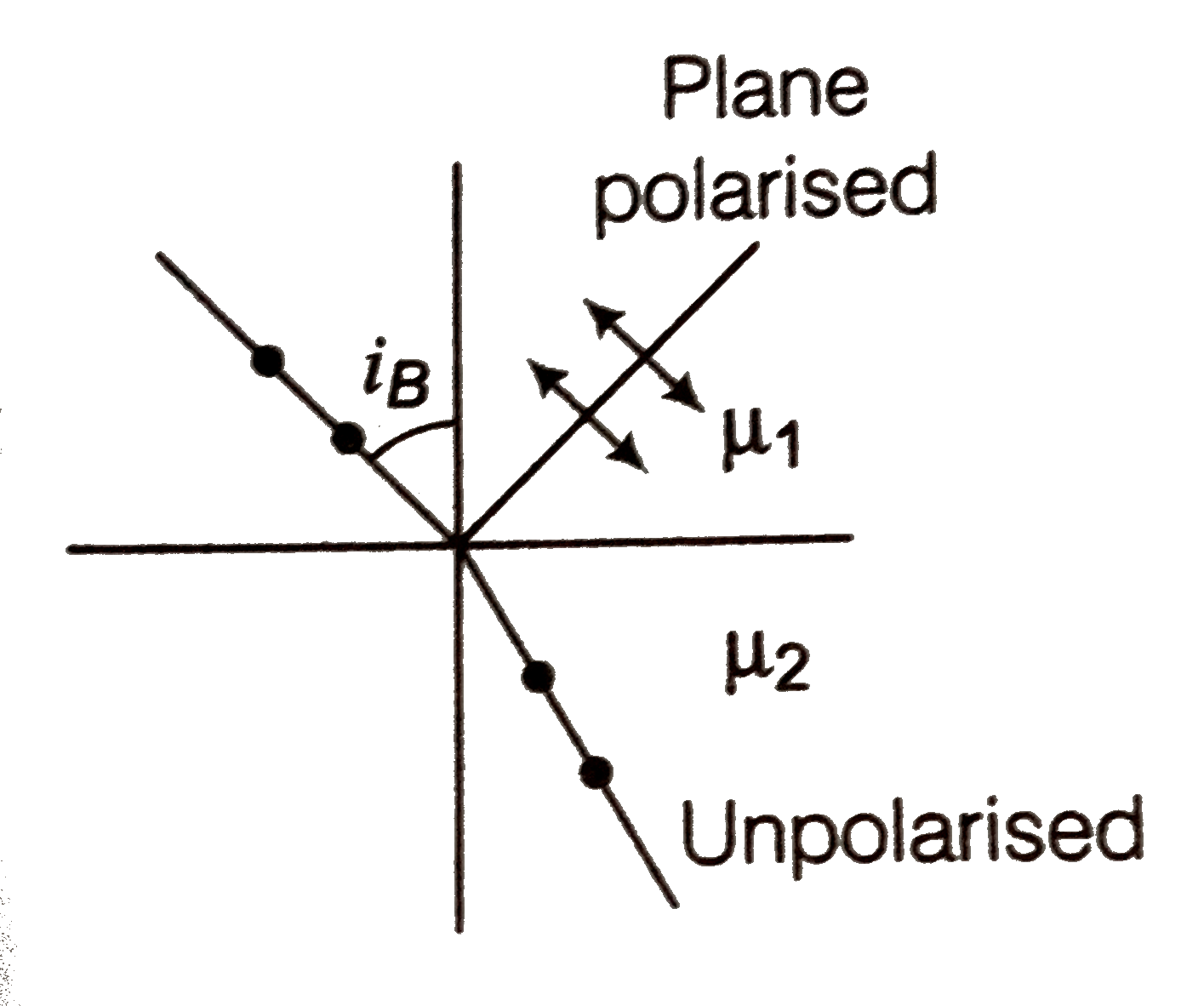Can reflection result in plane polarised light if the light is incident on interface from the side with higher refractive index?
When angle of incidence is equal to Brewster's angle,he transmitted light is unpolarised and reflected light is plane polarised.
Consider the diagram in which unpolarised light is represented by dot and plane polarised light is represented by arrows.

Polarisation by reflection occurs when the angle of incidence is the Brewster's angle
i.e, taniB=1μ2=μ2μ1 where μ2<μ1
when the light rays travels in such a medium, the critical angle is
SiniC=μ1μ2
where μ2<μ1
As ∣taniB|>|SiniC∣ for large angles iB<iC
Thus, the polarisation by reflection occurs definitely.
Topper's Solved these Questions
Similar Questions
When light of particular wavelength falls on a plane surface at an angle of incidence 60∘ then the reflected light becomes completely plane polarised Find the refractive index of surface material and the angle of refraction through it.
View SolutionDistinguish between unpolarised and plane polarised light. An unpolarised light is incident on the boundary between two transparent media. State the condition when the reflected wave is totally plane polarised. Find out the expression for the angle of incidence in this case.
View Solution
Knowledge Check
- Question 1 - Select One
A beam of light travelling in water strikes a glass plate, which is also immersed in water. When the angle of incidence is 51∘, the reflected beam is found to be plane polarised . What is the refractive index of glass if the refractive index of water is 43? [tan51∘=1.235]
A1.646B1.325C2.123D1.987 - Question 2 - Select One
When light is incident from air to glass at an angle 57∘, the reflected beam is completely polarised. If the same beam is incident from water to glass, the angle of incidence at which reflected beam is completely polarised will be
A(a) θ=57∘B(b) θ>57∘C(c) θ<57∘D(d) cannot be determined - Question 3 - Select One
A parallel beam of monochromatic unpolarised light is incident on a transparent dielectric plate of refractive index 1√3. The reflected beam is completely polarised . Then the angle of incidence is
A30∘B60∘C45∘D75∘
When sunlight is incident on water at an angle of 53∘, the reflected light is found to be completely plane-polarised. Determine (i) angle of refraction of light and (ii) refractive index of water.
View Solution(a) How does one demonstrate, using a suitable diagram, that unpolarised light when passed through a Polaroid gets polarised?
(b) A beam of unpolarised light is incident a glass-air interface. Show using a suitable ray diagram, that light reflected from the interface is totally polarised, when μ=taniB, when μ is the refractive index of glass with respect to air and iB, is the Brewster's angle.View SolutionThe refractive index of a medium is √3. What is the angle of refraction, if the unpolarised light is incident on it at the polarising angle of the medium ?
View SolutionAN unpolarised beam of light is incident at the polarising angle on the surface of a transparent medium of refractive index 1.6. The angle of refraction in the medium is
View SolutionAt what angle should an unpolarised beam of light he incident on a medium of refractive index √3 so that the reflected beam is completely polarised ?
View Solution
